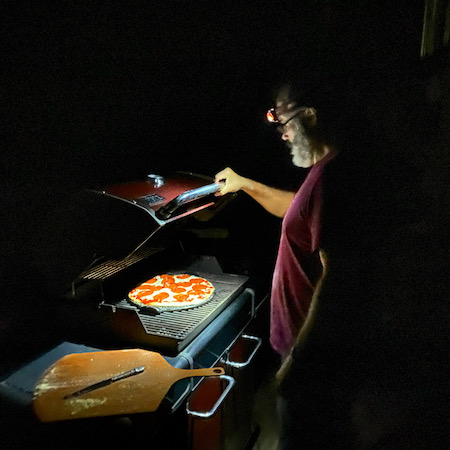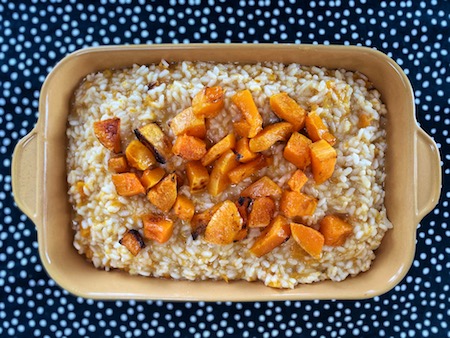
It has been a trying week as we’ve been dealing with our latest power blackout here in Northern California. Of course, living with no power for five days is a small price to pay, especially when compared to our neighbors just a few miles north – and our southern California neighbors — who are dealing with wildfires.
I call it ‘camping, but in a big house,’ because I’ve had to resort to some ingenuity when it comes to cooking what we have on hand. We had a bit of warning that the electricity was to be turned off for a few days (of course, didn’t realize it would be nearly 5 days), so when I went shopping prior to losing our power, I had to think about what to buy, and what to prepare – it’s a process that I already do on a week-to-week basis, but this time was a bit different.
I mentally took stock of what I could prepare – pizza on the grill, pasta, a frittata, fried rice . . . and then headed out to shop.
On the Grill or Stovetop

The lights turned off early Saturday evening, but we were prepared with our weekly Saturday night pizza. We usually grill our pizza, so the only difference this week is that Greg had to prepare the pizza in the kitchen using a headlamp – while the hungry family sat in the dark, playing board games. He then headed out to the deck to grill it up!
By morning, we were all chilled from lack of heat in the house, so we all hurried to the kitchen to prepare hot chocolate and coffee. Our daily ritual is top-of-the-stove Chemex pour over ( or a Melitta pour over depending on how many cups we desire). I am also relieved that I could also brew in our Alessi moka pot, when we needed the extra shot of espresso in the late afternoon.
Luckily I had the foresight to grind several pots worth of coffee, as our burr grinder is electric. I am seriously thinking about a Handground precision coffee grinder for all future blackouts, so that I can grind as needed, by hand, for fresher coffee on my blackout mornings.
Eat the Fridge

“Use up the milk,” was my mantra on Sunday morning – so, it was cereal for breakfast, and warmed milk for the hot chocolate.
Next up was a perusal of items that needed to be consumed soon – those that wouldn’t stay fresh too long without refrigeration (although I was tempted to leave them outside the fridge as our house was getting colder by the minute). Eggs for breakfast – or an evening frittata might do, and for lunch, it was the leftover squash risotto heated on the stovetop, and yogurt in between.
Proper Food Temperatures
By Sunday evening, I had pulled out my food thermometer to measure temperature inside the fridge and freezer, so I could continue my blackout eating plan for the following day.
Temperature was holding at a cold enough temperature – perhaps bolstered by additional bags of ice in the freezer.
Your refrigerator should be 40°F/-15°C or below for safe food storage. Use a refrigerator thermometer to make sure the temperature is right.
One the last day of the blackout, it was time to prepare the whole chicken. Admittedly, I had never before prepared a whole chicken on the stovetop, often preferring to crisp the skin in the broiler, then placing it in a copper pot in the oven. This time around, I nestled it inside my Le Creuset pot, added a bit of homemade stock from the freezer, a few spices, then set to medium to cook.
That evening, we ate the chicken with the lights on, as our electricity was restored! The house was warming up, and so were our moods. What made it even better was that everyone was home and gathered around the table . . . things were back to normal.
You don’t need a blackout to think about what’s in your fridge. Make it a habit on a weekly basis to use your leftovers, and determine which foods may go bad soon, it will help save the planet and your wallet. Check out Stop Food Waste for tips on how to reduce food waste.





